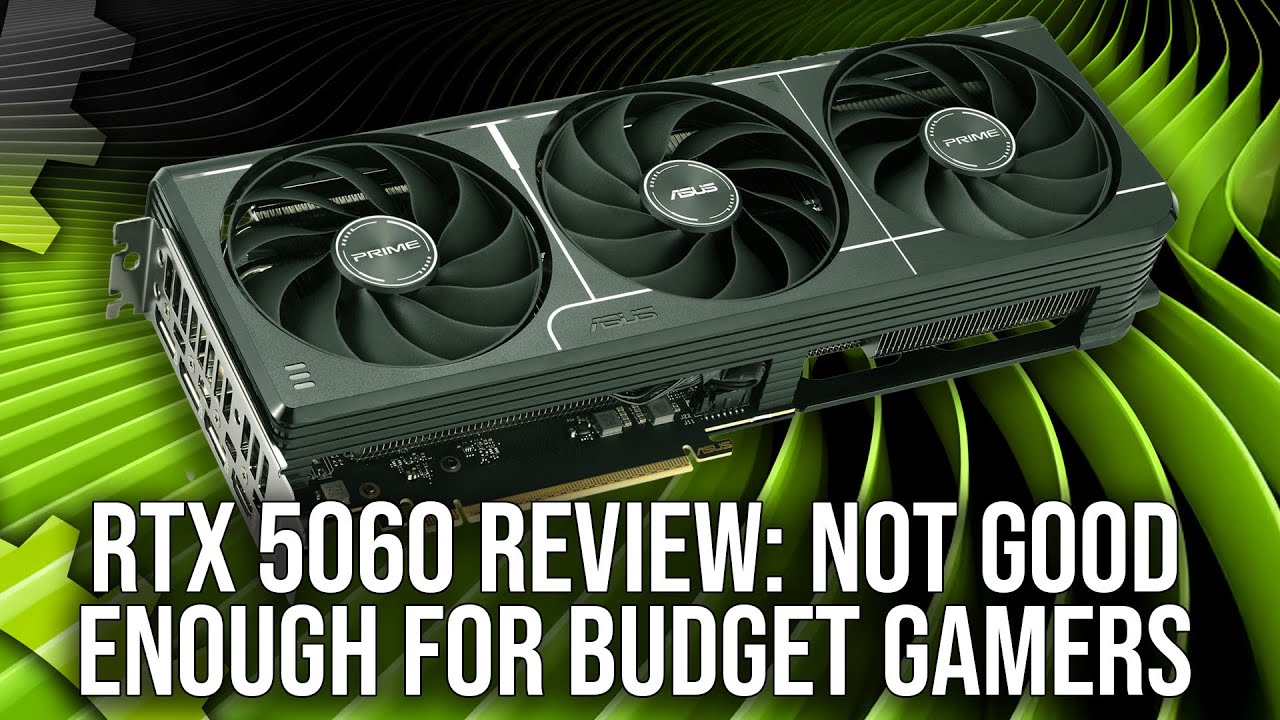The Nvidia GeForce RTX 5060 offers performance comparable to higher-tier GPUs like the 3060 Ti and 4060 Ti, excelling in rasterization and ray tracing but is hampered by its limited 8GB VRAM, which is insufficient for modern AAA gaming and demanding features. While it performs well on modern systems with PCIe 4.0, its performance on older PCIe 3.0 systems and future-proofing concerns make it less ideal, especially with upcoming competitors like the AMD 16GB 9060 XT.
The review of the Nvidia GeForce RTX 5060 highlights that Nvidia did not release press drivers before the launch, limiting early testing opportunities. The tested ASUS Prime model offers performance comparable to the RTX 3060 Ti or 4060 Ti, costing around $299 and providing a significant upgrade over the RTX 3060, especially in compute tasks. However, the 8GB VRAM capacity is a major concern, as it is insufficient for modern AAA gaming and ray tracing features, which demand more memory. Additionally, the card’s PCIe x8 interface, especially on older PCIe 3.0 systems, can hinder performance, raising questions about its suitability for budget builds with older hardware.
In terms of specifications, the RTX 5060 is essentially a cut-down version of the 5060 Ti, sharing the same GPU core but with fewer CUDA cores and slightly lower boost clocks. It features GDDR7 memory with a 128-bit interface, offering 448 GB/s bandwidth—an upgrade from the 4060 but similar to older models like the 2060 Super. The card’s TGP is 150W, and the ASUS model’s large cooling system is somewhat overengineered for its power draw. Performance benchmarks at 1080p and 1440p show the 5060 outperforming the 3060 significantly, often approaching the performance levels of the higher-tier 4060 Ti, making it a compelling option on paper.
Benchmark results reveal that the RTX 5060 performs well in rasterization and ray tracing, often matching or exceeding the PS5’s performance at similar settings. In titles like Alan Wake 2 and Hitman, the card delivers frame rates comparable to or better than the console, especially when VRAM isn’t a limiting factor. However, the performance drops sharply in VRAM-constrained scenarios, such as with 8GB cards running demanding ray tracing or high-resolution textures, where frame rates can fall below 20 fps. The card’s performance is also affected by PCIe bandwidth limitations, with older PCIe 3.0 systems experiencing notable performance drops in demanding scenarios.
The review emphasizes that while the RTX 5060 can deliver excellent results when properly tuned and used on modern systems with PCIe 4.0 or better, there are significant caveats. The 8GB VRAM limit is a deal breaker for future-proofing, as AAA games and ray tracing features continue to demand more memory. The PCIe x8 interface on older systems can cause performance degradation, making the card less suitable for upgrades in such setups. The upcoming AMD 16GB 9060 XT, promising similar performance at a comparable price, could further challenge Nvidia’s position, suggesting consumers wait to see how this new competitor performs before making a purchase.
